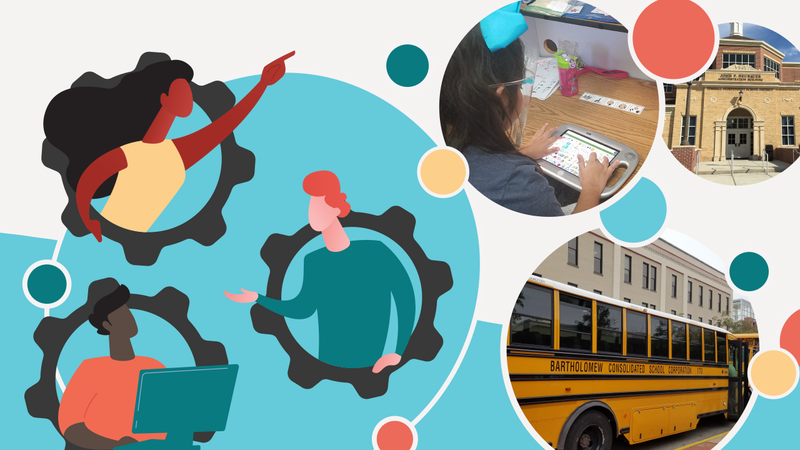Develop A Professional Learning System

Get Started Developing a PL System:
Establishing a robust professional learning system that trains professionals in the district and includes coaching support is a critical structure to implement inclusive practices for teaching with technology.
Actions that lead to the development of clear outcomes for professional learning include:
- Prioritize professional learning support: Leadership prioritizes professional learning design and delivery to promote the vision of an inclusive technology ecosystem.
- Build district capacity via coaching support: Leadership establishes coaching capacity that will further promote and implement the vision of an inclusive technology system.
Learn from Our Partners

- Webinar: What's It All About: Teaching, Learning, & Assessment
- Blog Post: 6 Step to Take to Boost Tech Accessibilityexternal site (EdWeb)
- Case Story: BCSC | Columbus, INPDF document
Resources
- Effective Teacher Professional Developmentexternal site, Learning Policy Institute
- Exploratory Research on Designing Online Communitiesexternal site, Office of EdTech, US Dept of Education
- Professional Learning to Support Students with Disabilities in Virtual LearningPDF document, Center on Inclusive Technology & Education Systems (CITES) at CASTexternal site
- Guide to Professional Learning for Accessibility and Assistive Technologiesexternal site, CITES at CAST
Bellevue's Story

Bellevue Public Schools (Bellevue, Nebraska)
© 2020 Google
Bellevue Public Schools is a suburban district south of Omaha, Nebraska serving approximately 10,000 students. The seeds for the district’s technology vision and planning were planted years ago with a goal of moving towards a 1:1 model district-wide that is are now moving forward with this vision as part of a 5-year strategic plan. Before initiating their implementation efforts, the district leadership team conducted considerable research on which technology tools would be best for both students and staff. They recognized that their technology implementation efforts that focused on “handing out devices” would not succeed and focused on planning for innovative use, sustainability, and ongoing professional development and training.
To support the 1:1 initiative, the district’s professional development model includes six full days of training on blended learning with technology; ongoing classroom-based coaching; and built-in collaboration time for teachers to work together to share ideas, experiences, challenges and successes. The Bellevue team noted that a critical part of their success has been a focus on sustainability and continuous improvement. Building capacity and growing teacher leaders is a primary goal of all professional development in the district. These teacher leaders work to keep the vision going even in the event of staffing changes and turnover. Bellevue places an emphasis on continuous training and coaching for all teachers. Thelneaders recommend that other districts recognize that this is an attainable process that requires a “go slow to go fast” approach and that it requires time in planning and implementing.
Supporting Research
- Eutsler, L. & Antonenko, P. (2018). Predictors of portable technology adoption intentions to support elementary children reading. Education and Information Technologies. 23. https://doi.org/10.1007/s10639-018-9700-zexternal site
- Fischer, C., Fishman, B., Dede, C., Eisenkraft, A., Frumin, K., Foster, B., ... & McCoy, A. (2018). Investigating relationships between school context, teacher professional development, teaching practices, and student achievement in response to a nationwide science reform. Teaching and Teacher Education, 72, 107-121.
- Shaha, S. H., Glassett, K. F., & Ellsworth, H. (2015). Long-term impact of on-demand professional development on student performance: A longitudinal multi-state study. Journal of International Education Research (JIER), 11(1), 29-34.
- Smylie, M. A., & Eckert, J. (2018). Beyond superheroes and advocacy: The pathway of teacher leadership development. Educational Management Administration & Leadership, 46(4), 556-577.
- Darling-Hammond, L., Hyler, M. E., & Gardner, M. (2017). Effective Teacher Professional Development.
- Ertmer, P. A., & Ottenbreit-Leftwich, A. T. (2010). Teacher technology change: How knowledge, confidence, beliefs, and culture intersect. Journal of research on Technology in Education, 42(3), 255-284.